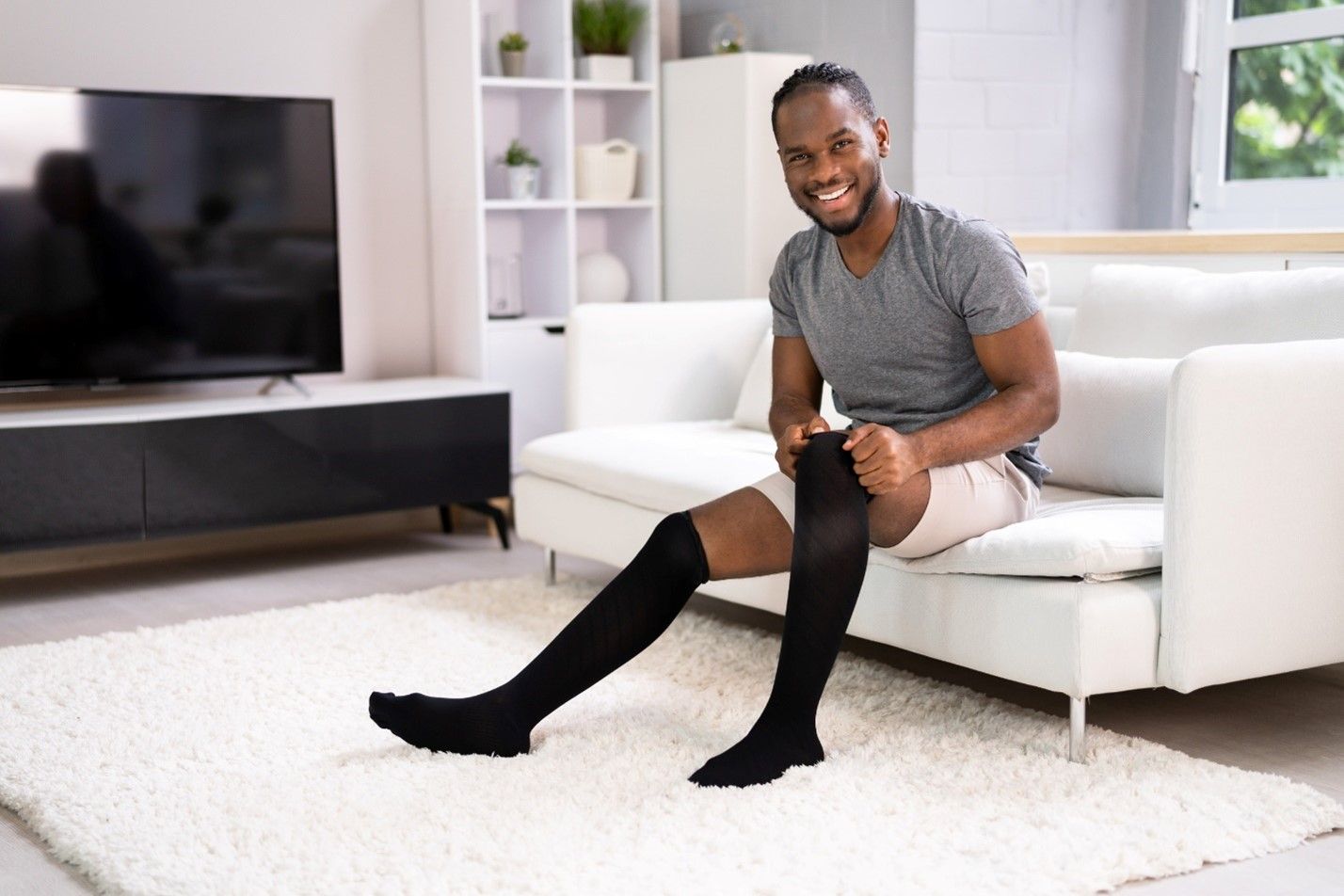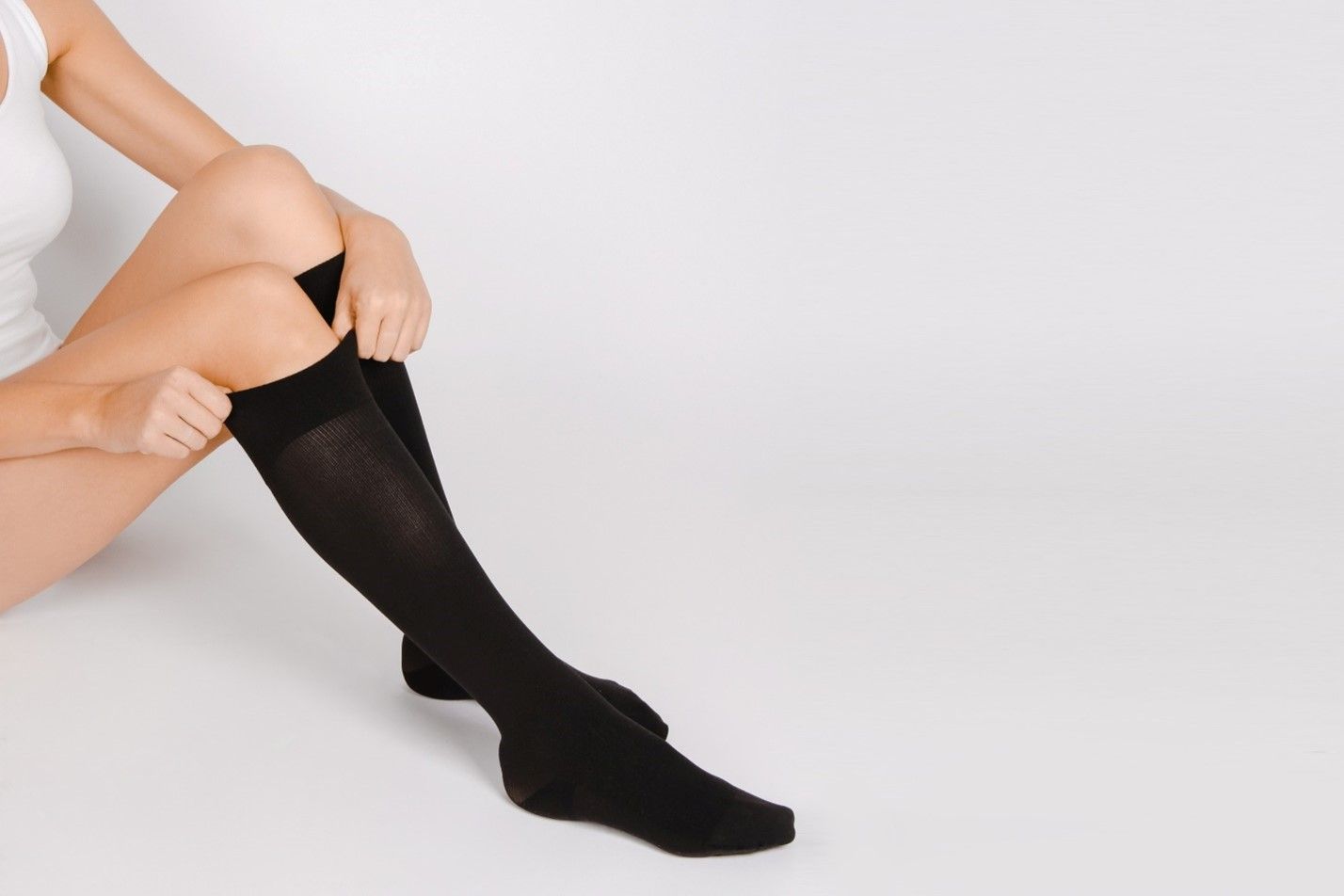Compression Socks Buying Guide
How to Choose the Best Pair of Compression Socks for You
|
How to Choose the Best Pair Of Compression Socks for You
Compression socks are a popular choice for people who want to improve circulation, reduce swelling and prevent varicose veins. They're also a great option for people with conditions like deep vein thrombosis (DVT) or post-thrombotic syndrome (PTS). However, with so many different types and brands of compression socks and compression stockings on the market, it can be hard to know which ones are the best fit for you.
So, what are the best compression socks? In this guide, we'll discuss some important factors to consider when choosing compression stockings, including material, compression level and size, as well as introduce you to a specific type of compression socks designed for people with neuropathy. When you understand more about compression socks and how they work, you will be better able to select the best compression socks for your needs.
Understanding Compression Levels
First, it's important to understand the different levels of compression available in compression socks and compression stockings. They come in three main levels: mild, moderate and strong. Mild compression is around 15-20 mmHg, moderate compression is around 20-30 mmHg and strong compression is around 30-40 mmHg. It's important to choose the right compression level for your needs. For example, if you have varicose veins or mild swelling, mild compression may be enough. But if you have DVT or PTS, you may need stronger compression.
Materials and Sizes of Compression Socks
Next, consider the material of the compression socks. Both standard and cool compression socks (which are compression socks designed to help keep feet cool) are typically made of either nylon or spandex. Nylon is a durable and moisture-wicking material that is great for everyday wear. Spandex, on the other hand, is stretchier and more breathable, which makes it a good choice for athletes or people who are active.
It's also important to choose the right size. Compression socks should fit snugly, but not too tight. They should also be comfortable to wear for long periods of time. Some top-rated compression socks are made by brands that offer a variety of sizes, including half sizes, which can make a big difference in getting the right fit.
Effective Therapeutic Support
Finally, for people with neuropathy, there are specific compression socks that are designed to provide extra comfort and support. Neuropathy is a condition in which the nerves in the feet are damaged. It can cause numbness, tingling and pain. The most effective compression socks for this condition provide gentle compression and cushioning to help reduce discomfort and improve circulation. They often have a non-binding top and extra padding in the heel and toe areas.
In conclusion, choosing the right compression socks depends on your individual needs and preferences. Consider the compression level, material, size and comfort when making your decision. If you have neuropathy, remember that there are specific compression socks that are designed to provide extra support and comfort, and keep in mind that the compression level required for neuropathy is usually mild compression.
It's always recommended to consult with a doctor or a certified specialist before starting to use compression socks.
Finding the Right Compression Levels
Compression stockings are available in different compression levels to meet various needs. Here's a breakdown of the most common compression levels and their recommended uses:
It's important to note that while higher levels of compression provide more support, they may also be more difficult to put on and take off. It's always best to consult with your healthcare provider before choosing a compression level and type that works best for your specific needs.
Compression Socks FAQ
Q. What strength compression socks do I need? A. Generally, 15-20 mmHg compression is considered mild, 20-30 mmHg is considered medium strength and 30-40 mmHg and above is considered strong. Mild compression is suitable for light compression needs, such as those dealing with light swelling or varicose veins. Mid-range and high compression are typically recommended for those with PTS, DVT, post-surgical recovery and other conditions.
Q. What does 20-30 mmHg mean in compression stockings? A. This range indicates that the compression level is no less than 20 mmHg and no more than 30 mmHg – in other words, medium-strength compression.
Q. How do I know which compression socks are right for me? A. Choose compression socks based on your unique needs. For example, if your leg issues involve mild swelling, mild compression is best. Mild compression is also usually recommended for those dealing with neuropathy. Higher compression may be recommended for the treatment of other conditions. Ask your doctor exactly which type of compression is right for you.
Q. What is the difference from 15-20 mmHg compression socks? A. Compression socks in the 15-20 mmHg range are considered mild compression socks. These socks are generally suitable for daily wear, playing sports or traveling.
|

